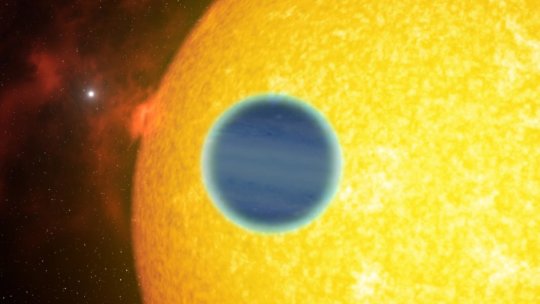[ad_1]
The extrasolar planet WASP-127b is one of the least dense exoplanets ever found. It has a radius 1.4 times greater than Jupiter, but only 20% of its mass. Such a planet has no analogue in the solar system and is rare even within the exoplanet diversity. It takes just over four days to complete an orbit around its parent star and its surface temperature is around 1400 K (1127 ° C).
The observations of WASP-127b reveal the presence of a large concentration of alkali metals in its atmosphere, allowing simultaneous detections of Sodium, Potassium and Lithium, for the first time in an exoplanet. The Sodium and Potassium absorptions are very broad, which is a characteristic shape in relatively clear atmospheres, and model fits indicate that the skies of WASP-127b are approximately 50% clear.
Guo Chen, a postdoctoral researcher at the IAC and first author of the article, explains “the particular characteristics of this planet allowed us to perform a detailed study of its rich atmospheric composition.” And adds that “The presence of Li is very valuable to understand the evolutionary history of the planetary system and could shed light on the mechanisms of planet formation.” In fact, the planet’s host star, WASP-127, is also Li rich, which could point to an AGB star or supernovae having enriched the cloud of material from which this system originated.
Enric Pallé, a researcher at the IAC and co-author of the study, points out that they also found possible signs of water. “While this detection is not statistically significant, as water features are weak in the visible,” he says, “our data indicates that additional observations in the near-infrared should detect it with high significance.”
The results obtained indicate the great potential of ground-based telescopes for the study of planetary atmospheres. “In particular, the detection of a trace element such as Li in a planetary atmosphere is a major breakthrough and motivates new follow-up observations and detailed theoretical modelling to corroborate the findings,” says Nikku Madhusudhan, from the University of Cambridge.
We are just starting to probe the atmospheres of these planets with ground-based telescopes, but Chen believes that this “will also be a reference exoplanet for future studies with space telescopes such as the James Webb.” These future studies will reveal the detailed nature of WASP-127b as a benchmark for this new class of very low density exoplanets.
Story Source:
Materials provided by Instituto de Astrofísica de Canarias (IAC). Note: Content may be edited for style and length.
[ad_2]















